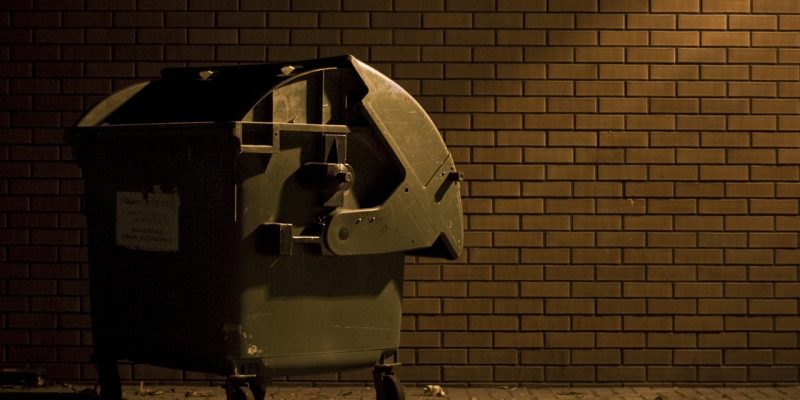You want to ensure that every space and resource is used efficiently when filling a skip bin. However, there are better approaches than tossing and loading items you don’t need into the skip bin.
We’ve compiled the best ways to maximize your skip bin hire, from simple home renovations, decluttering old furniture, and removing garden waste to larger projects such as construction or demolition jobs.
Waste Management And Skip Bins
The common denominator is waste management when loading piles of stuff in your skip bin. Your goal should be to ensure you don’t overfill the container, so it’s essential to measure and plan every step of your skip bin hire process.
When filling a skip bin, stack up boxes or bags and distribute them evenly around the entire circumference of the skip bin.
Heavier items, such as furniture, should be placed in the center for even weight distribution. A same day skip bin hire also offers rubbish removal services, so if you find yourself with a full skip bin and you still have more to dispose of, call your local waste management company for assistance.
It’s also important to remember that certain items cannot be thrown in the bin. These include:
- Hazardous materials such as paint tins, liquids, chemicals, and batteries
- Electronic waste, such as computers, TVs, and household electronics
- Large items such as car parts and whitegoods like fridges or washing machines
For larger jobs such as construction or demolition projects, it is best to contact a specialist who can advise on the size and type of skip bins needed. They will also assist with loading, so you don’t have to do it all yourself.
Furthermore, it is essential to remember that when you have finished filling your skip bin, you must also unload it properly. Emptying a skip bin involves sorting and disposing of waste into the appropriate bins or containers for recycling or disposal.
Skip Bin Dos And Don’ts To Remember
Skips, or skip bins, are great ways to promptly manage and dispose of waste. Here are some do’s and don’ts to keep in mind when filling and unloading a skip bin:
Do:
- Measure the size of your area before hiring a skip bin so you know what size is required.
- Ensure all items are distributed evenly across the entire circumference of the skip bin.
- Place heavier items like furniture in the middle for even weight distribution.
- Sort through and separate hazardous materials, such as chemicals or electronics, prior to loading into your skip bin.
Don’t:
- Overfill your skip bin; make sure it is filled only halfway up its walls
- Throw large items like car parts or white goods into the skip bin
- Mix different types of materials, such as rubber and metal, as this might create a fire hazard
- Throw hazardous materials into your skip bin.
Declaring what’s inside your skip bin is also a must; this helps the waste management company understand what type of waste you dispose of and ensure it gets disposed of correctly.
How Should You Fill Your Skips?
If it’s your first time hiring and using skips for your home decluttering project, for instance, and you are getting lost on how to stack up your skip bin, there are a few essential tips to keep in mind.
1. Measure the area
Before hiring a skip bin, make sure that you measure the area or space where it will be placed. This helps you determine what size of skip bin is needed for your project and helps avoid overfilling the skip bin.
Skip bins come in various sizes, from 2 meters to 10 meters.
2. Know what’s allowed and not
From debris like trees to large items like furniture, knowing what things you can and cannot throw into the skip bin is essential. Non-recyclable or hazardous materials such as paint tins, chemicals, and batteries should not be thrown in the skip bin.
3. Fill evenly
Load your items by stacking boxes or bags around the circumference of the skip bin. Place heavier items, such as furniture, in the middle for even weight distribution. Ensure you fill the skip bin evenly; only fill it up to its halfway mark.
4. Check weight restrictions
Certain skip bins come with weight restrictions, so checking the limits before loading and transporting the container is essential.
5. Separate recyclable items
Before filling your skip bin, separate recyclable materials such as metals and plastics into different containers for easy later sorting. That way, when you unload the skip bin, you can easily sort out these items quickly without searching through a pile of waste.
6. Lighter items before heavy ones
Always place lighter items first and heavier materials on top when filling your skip bin. This is to ensure that the weight of the heavy materials is distributed evenly throughout the entire skip bin.
Disposing of waste the right way requires proper planning and arrangement. Following best practices when filling and unloading a skip bin ensures efficient waste disposal and keeps yourself safe from accidents due to an unevenly loaded skip bin.
Final Words
Make the most of your time, space, and money with a skip bin hire and waste management services. Remember the pointers in this guide to ensure you dispense materials efficiently and safely. Waste management doesn’t have to be complicated; with the right help, it can be made easier and more sustainable for everyone involved.















